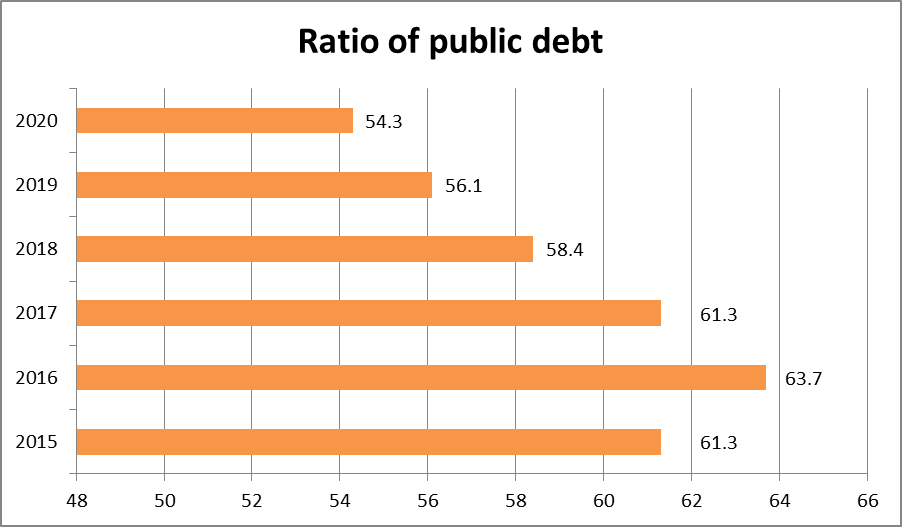Public debt continues with downward trend, Gov’t report shows
Mon, 28 Oct 2019 14:08:00 | Print | Email Share:
Viet Nam’s public debt will fall to 56.1% of GDP by the end of 2019 from 58.4% last year, according to the Government’s latest report.

Viet Nam's public debt to GDP ratio between 2015 and 2020
Meanwhile, Government debt to GDP ratio is expected to decrease to 49.2% from 50% in 2018 and foreign debt is expected to decline to 45.8% from 46% in 2018, the report shows.
The Government forecasts that public debt and Government debt will be likely reduced to 54.3% and 48.5%, respectively, in 2020.
Pressure of repayment obligations has been eased thanks to the decrease of public debt growth, from 18% between 2011 and 2015 down to 8% over the past years, said Minister of Finance Dinh Tien Dung.
More importantly, the average annual interest rate for Government bonds and domestic loans fell from 12-13% in the 2011-2013 period to 4.6% in recent years, Dung underlined.
State budget revenues from State-owned enterprises, FDI and non-State sectors was estimated to grow by 10.9% this year, higher than the GDP and inflation growth rates, compared to 9.9% in 2016, 5.6% in 2017, and 9.7% in 2018, Dung said.
Dung added that regular budget spending is expected to account for 60.5% of total spending in 2020 compared to the preset goal of 64%.
Foreign currency reserve rose to US$73 billion from US$31 billion at the start of the current Government’s tenure (2016).
In addition, thanks to the Government’s drastic efforts, the ratio of non-performing loans of credit organizations dipped to 4.84% as of August 2019 compared to 5.85% in 2018, 7.36% in 2017 and 10.08% in 2016, of which credit institutions’ bad debts accounted for 2%, according to Deputy Governor of the State Bank of Viet Nam Nguyen Kim Anh.
With the above positive trend, the Government determines to bring the ratio of non-performing loans down to below 3% by the end of 2020.
Positive credit outlook
Last May, Fitch Ratings revised Viet Nam’s credit outlook to “positive” from “stable” while affirming the Southeast Asian country’s sovereign credit ratting at “BB”.
The revision of the outlook reflected an improving track record of of economic management, strengthening external buffers from persistent current account surpluses, falling debt levels, high economic growth rates and stable inflation.
In April this year, S&P Global Ratings raised Viet Nam’s sovereign credit rating to BB from BB- for the first time after nine years.
The upgrade is a reflection of the Vietnamese economy's rapid expansion and improvements in the Government's "institutional settings", according to the S&P./.
By: Quang Minh/Online Newspaper of the Government - Viet Nam Government Portal
---------------------------------------------
Same category News :













